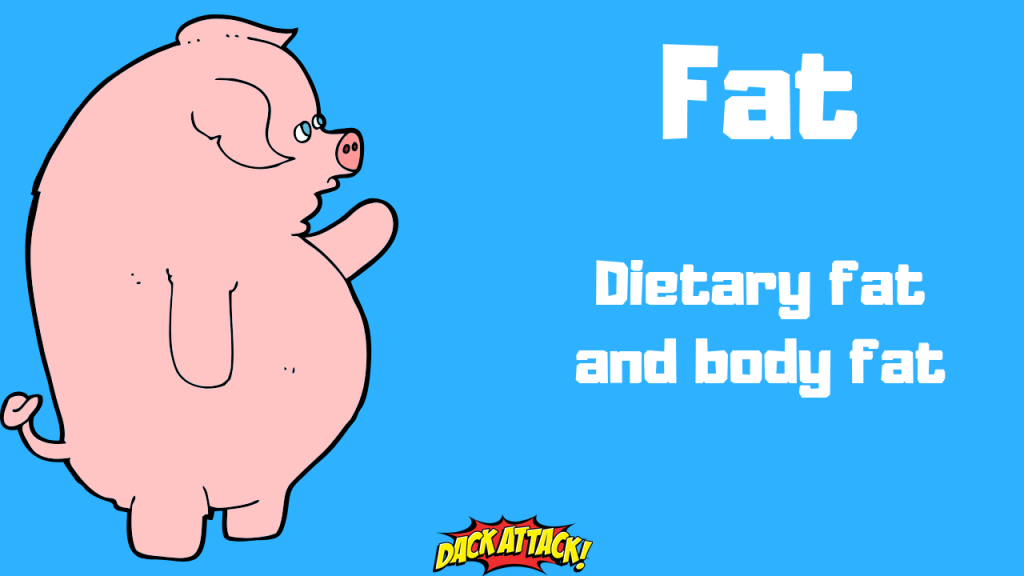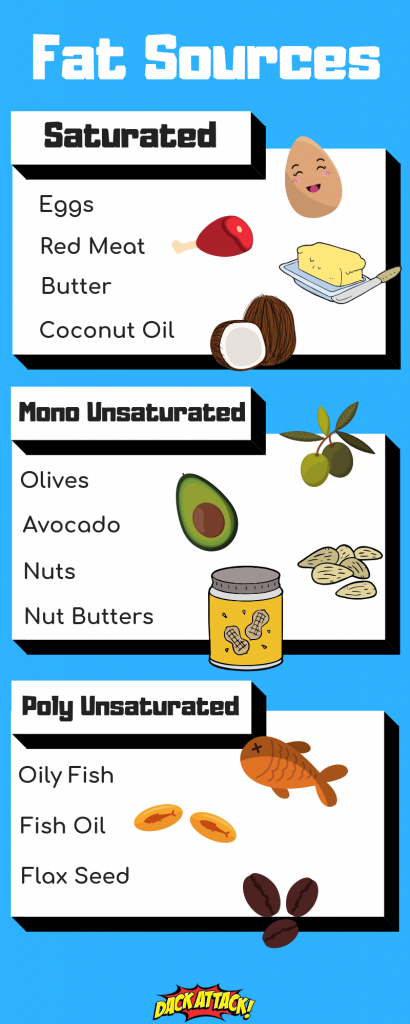
Fats overview
Dietary fat is one of the macronutrients that make up all food (the other two being carbohydrates and protein). Fat is vital within the diet and has been given an unnecessary bad reputation over the years.
Why is fat needed?
A source of energy – Along with protein and carbohydrates, fats are used by the body as a source of fuel and are used based on requirements.
Vitamin storage – There are certain vitamins that are classed as fat-soluble vitamins. These are vitamins A, D, E and K. It is important to eat fatty foods that are high in these vitamins to ensure you are getting enough of these vitamins.
Cell structure – All the cells within our body are surrounded by a membrane. This membrane is mainly made from fats and play an important role in controlling substances in and out of the cell.
Dietary fat vs body fat
Dietary fat is contained within foods we eat and is broken down by the body and used for various bodily functions (see above). Body fat is stored energy from being in a calorie surplus for any length of time i.e. your are eating more calories than you are burning.

Does eating fat make you fat, or does it help you burn fat?
By eating dietary fat you will not get fat overnight or possess the ability to burn any more fat.
Ultimately it comes down to eating too many calories, rather than the individual macronutrient. It’s easy to blame a single food group but it only plays a role in a much bigger picture.
Whilst fat is not single handily responsible for body fat, it can be easy to consume a large number of calories which in turn can make you fat. This is especially true for liquid sources of fat, such as olive oil, containing around 120 Kcals per tablespoon.
Per gram, fat has more calories compared with protein and carbohydrates making a calorie dense food group. You need to bear this in mind when considering portion sizes and eating enough volume to keep you feeling full.
Protein 1g = 4 Kcals
Carbs 1g = 4 Kcals
Fat 1g = 9 Kcals
Types of fat
There are a few different types of fats they you need to be aware of.
Saturated Fat
Saturated fats are found in many foods but are especially high in animal products such as meat and dairy products. Some oils are high in saturated fats such as coconut oil and palm oil.
Unsaturated Fat
Unsaturated fat is broken down into two different types. Monounsaturated and polyunsaturated.
Monounsaturated – Monounsaturated fats can help protect the heart by controlling our levels of good and bad cholesterol. They are found in olive oils, avocados and certain types of nuts.
Polyunsaturated – There are two main types of polyunsaturated fats and that is omega 3 and omega 6. Omega 6 fats are found in rapeseed, corn, sunflower and some nuts. Whilst omega 3 fats are found in oily fish such as mackerel, salmon and herring.

How much should I be eating?
Most nutritional guidelines suggest a fat intake of between 20-35% of total calories consumed. This ensures you are meeting the minimum requirements for health and vitamin consumption. This works out as around 1 -2 thumbs of fats per meal for most individuals. This will vary for each individual and is only a rough guideline.
The brains, brawn and beauty of Dackattack (basically it’s just me). A personal trainer with a private gym in Norwich, dedicated to giving out simple, actionable advice that will give you outstanding results.
